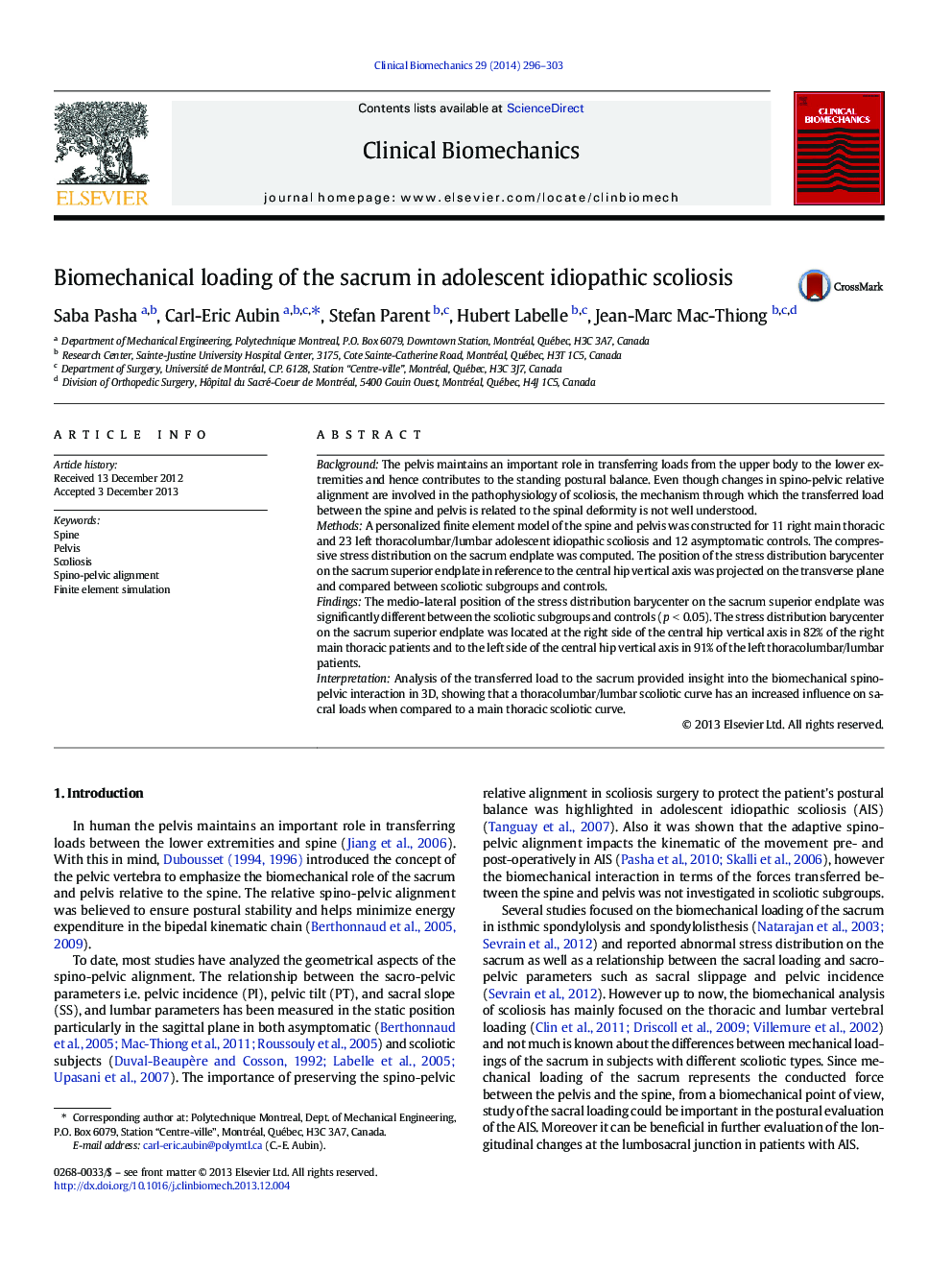| Article ID | Journal | Published Year | Pages | File Type |
|---|---|---|---|---|
| 4050283 | Clinical Biomechanics | 2014 | 8 Pages |
BackgroundThe pelvis maintains an important role in transferring loads from the upper body to the lower extremities and hence contributes to the standing postural balance. Even though changes in spino-pelvic relative alignment are involved in the pathophysiology of scoliosis, the mechanism through which the transferred load between the spine and pelvis is related to the spinal deformity is not well understood.MethodsA personalized finite element model of the spine and pelvis was constructed for 11 right main thoracic and 23 left thoracolumbar/lumbar adolescent idiopathic scoliosis and 12 asymptomatic controls. The compressive stress distribution on the sacrum endplate was computed. The position of the stress distribution barycenter on the sacrum superior endplate in reference to the central hip vertical axis was projected on the transverse plane and compared between scoliotic subgroups and controls.FindingsThe medio-lateral position of the stress distribution barycenter on the sacrum superior endplate was significantly different between the scoliotic subgroups and controls (p < 0.05). The stress distribution barycenter on the sacrum superior endplate was located at the right side of the central hip vertical axis in 82% of the right main thoracic patients and to the left side of the central hip vertical axis in 91% of the left thoracolumbar/lumbar patients.InterpretationAnalysis of the transferred load to the sacrum provided insight into the biomechanical spino-pelvic interaction in 3D, showing that a thoracolumbar/lumbar scoliotic curve has an increased influence on sacral loads when compared to a main thoracic scoliotic curve.
